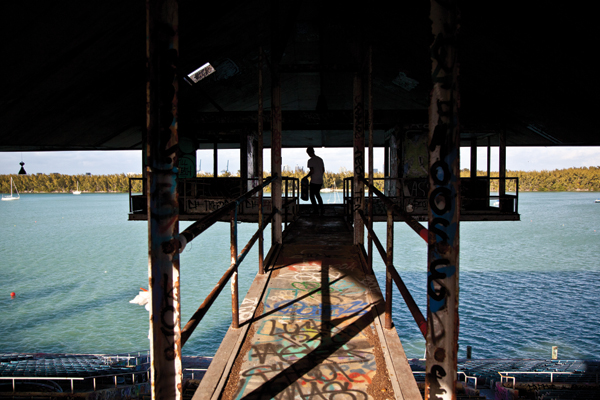
The Miami Marine Stadium, which has been abandoned since Hurricane Andrew in 1992, is now one step closer to being restored to its former glory.
On Thursday night, the City of Miami Commission will be voting on creating a partnership between the City of Miami, the Miami Sports and Exhibition Authority, and the Friends of Miami Marine Stadium. This partnership, if approved, will work to restore the stadium using a master plan developed by UM students in 2009.
The School of Architecture has been involved with the stadium’s restoration since 2009. Frank Sanchez, the program director at the World Monuments Fund, recently spoke to a group of UM architecture students about the future of the stadium.
The World Monuments Fund sponsors endangered, cultural and heritage sites around the world, and strives to ensure they are there for future generations. The stadium is currently on the World Monument 100 List, which recognizes culturally important places that are at risk of being forgotten and possibly destroyed.
He boasted of the stadium’s potential, believing it could re-create the success of New York’s High Line. The High Line has been transformed from an unused railway line to a park, which is now New York’s third most popular tourist attraction.
“The High Line has become an international sensation,” he said. “The Marine Stadium is destined to follow in its footsteps.”
Years ago, visitors could sit in the grandstand of the now dilapidated stadium and look out onto the water stage to see Jimmy Buffet rocking on. This was before Hurricane Andrew severely damaged the stadium in 1992. These days the abandoned stadium is home to graffiti artists, skaters and the odd maintenance man.
“This is the one place where I don’t have to worry about cops,” local skater Eddie Rivadeneira said. “I can freely skate here.”
Architecture professor Jorge Hernandez agrees with Sanchez. Hernandez is the co-founder of the organization Friends of Miami Marine Stadium, which is leading the fight to save the stadium from destruction. In 2009, Hernandez led a studio class of 12 architecture students that created a master plan for the stadium.
The class gave the stadium a facelift by restoring the grandstand, improving handicap access and making suggestions for the regeneration of the stadium’s immediate surroundings. The plan also preserves some of the graffiti that now covers the stadium. The students’ master plan was unanimously approved in 2010 by the City Commission of Miami. However, the city currently does not have the funding to implement it.
Hernandez and the city commission hope that the stadium will eventually be used again for concerts and events, and will remain open as a public park.
“I think it’s important because it adds another venue to the city,” said sophomore Jessica Tsiris, who regularly drives by the stadium. “It’s a different kind of place, it could bring in different people, smaller concerts.”
At the event, Hernandez also invited the co-founder and founding chair of the High Line, Robert Hammond and Phillip Aarons, to UM to help his organization learn from their experience of saving the High Line.
Hammond and Aarons stressed that fostering community involvement and public excitement is vital to gaining the funds necessary to save the stadium. One of the strategies the pair used to get the community involved and excited about the High Line was to host a design competition.
Hernandez’s organization adopted a similar strategy to get public support for the stadium by hosting a competition to design the water stage. The winning design, titled the “Miami Pearl,” was a floating sea-sphere designed to highlight the contrast between Miami’s landscape and seascape. This design will be incorporated in the students’ master plan.
Sophomore Madeline Gonzalez, an architecture major, believes that the stadium should be saved because of its architectural value.
“It has a historical importance to the city,” she said. “It was something very important in its age. The architecture has value for future generations.”





